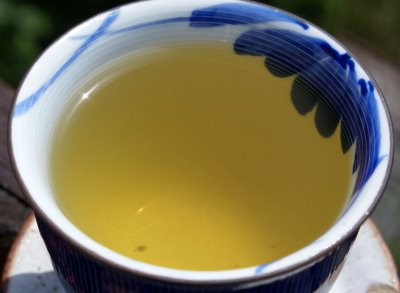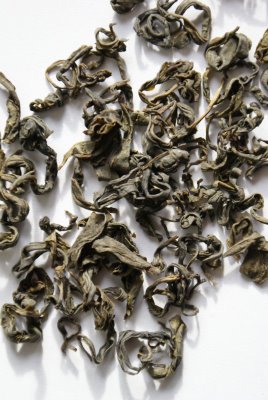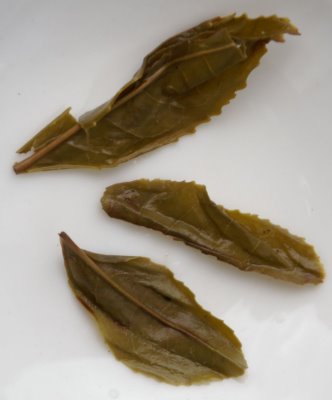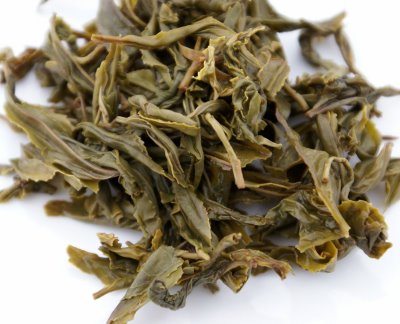2008 Nokcha
Posted on 11 June 2009
This is a belated note on an old favourite. This Nokcha from London’s Eastteas has long been a staple tea at my home, and I have probably consumed more of it than any other tea. As my supply of the latest vintage is slowly drawing to an end, it seems fitting to bid it farewell on this blog.
Korean tea is hard to come by in the ‘West’, and information on the web is very limited. The single printed reference I’m aware of is The Korean Way of Tea by Anthony of Taize (see his website for information and a comprehensive list of links). An excellent blog with comprehensive info on Korean teas, tea culture and tea ceramics is Mattcha. On the internet, tea from Korea is available from e.g. Eastteas, Hankook and Shan Shui.
According to FAO statistics for 2007, South Korea ranks a very distant 33rd in world tea production (behind Congo and Mauritius; comparing to wine, its status is similar to that of Canada, Georgia or Slovenia). It consumes about 20% more than it produces; it’s no wonder so little of its tea hits the shelves outside Korea itself. Consumption is estimated to be really low at 35 g per capita (20 times less than in Poland; I wonder how trustworthy this data is). Yet among aficionados, Korean tea enjoys a very high reputation.
You’ll often read that Korean tea production is a mixture of Chinese and Japanese influences. Green tea dominates but unlike Japan, there is also an amount of oolong (locally termed hwangcha, yellow tea) and black tea produced. Green teas are predominantly processed by pan-frying (Chinese technique), although some are steamed (as in Japan). But cultivation often follows Japanese influences in being heavily mechanised, including machine harvesting.
Tea in Korea is graded according to picking date, regardless of type (although this classification mirrors a rationale that in China is applied to green tea). The highest grade is ujeon (with variant spellings such as woojeong and woojun), which you could roughly compare to the Chinese pre-qing (picked before the arrival of springtime rains around April 20th). The next grade is sejak and the third grade is jungjak. Sometimes a fourth grade, daejak, is also distinguished, equivalent to what in China or Taiwan would be a summer flush (June or July). I have also encountered the term eunjak for the earliest-picked bud grade (= white tea), but this is very difficult to find. (For a discussion of Korean tea grades, see here and here).
This 2008 Organic Boseong Nokcha (= green tea) from Eastteas is classified as a green tea. Its largish curly leaves are a dark olive green colour (see photo at top of post) and suggest this is a jungjak grade I think. The colour of this first infusion (45 seconds with 3.5g / 100ml in gaiwan):

Deep colour to this slightly oxidised semi-green tea.
already shows this is not an ordinary green tea. In fact, it is midway into a slightly oxidised oolong. While surely closer to the Chinese style of tea than Japanese, it lacks the fresh green vegetal notes of most green teas. Instead, it is fairly grainy and distinctively nutty (a primary characteristic of Korean teas), yielding a medium-bodied infusion with good power and patience. It is relatively tolerant to high temperature, and yields four good infusions. The wet leaf is healthy and consistent, showing that even this relatively modest third flush is of very good quality.
While not exactly a green tea (it comes closest to a traditional Taiwanese Baozhong, though without the top floral notes), it is finely balanced and deliciously moreish. And above all, it has personality. I can’t think of any other tea quite like it. Easy to brew, inexpensive (£6.50 per 50g), distinctive – now you understand why it’s a perennial favourite for me.




